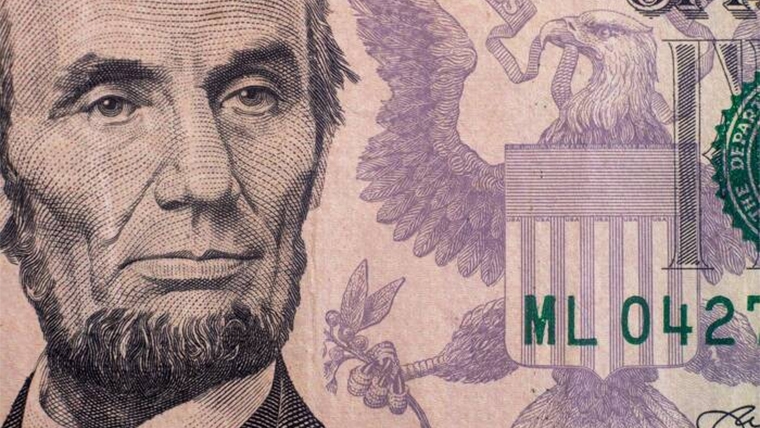
By Stuart Talman, XE currency strategist

A busy week of monetary policy meetings has delivered indecisive price action through Monday's sessions, as most asset classes trade tight ranges. The action will heat up as the week unfolds, Thursday morning's FOMC meeting the headline act amongst a lineup that includes 5 other G10 central banks delivering their latest policy updates.
Whilst the Fed and BoJ are widely expected to maintain current policy settings, the BoE, Riksbank, Norges Bank and Swiss National Bank are likely to all deliver 25bps hikes.
Despite inflation tracking lower over the past twelve months, CPI readings remain some distance above target, continuing to cause discomfort for the central bankers of developed nations.
WTI and Brent crude nearing US$100/barrel also ensures inflation related stress fails to meaningfully subside, higher energy prices risk increasing the risk of a headline inflation rebound, in turn spilling over into core CPI baskets.
History informs that returning inflation to target following periods of historically high prices is never an easy task as inflation re-emerges via second and third waves given central banks prematurely lift the foot of the tightening pedal, prioritising sustained growth over the inflation battle.
Certainly, the likes of Jerome Powell, Christine Lagarde, Andrew Bailey and their fellow central bank head peers are resolute in their efforts to stamp out inflation, determined not to repeat the mistakes of their predecessors.
Throughout 2022, the popular view was that Fed Chair Powell's series of mega-sized hikes would inevitably break something, sending not only the US, but the global economy into a pronounced recession.
Fast forward to the present, a soft-landing presents as the base case as, for the most part, a resilient US economy continues to hold up and outperform relative to other developed economies.
The US economic exceptionalism narrative has produced a remarkable run for the US dollar, last week extending the dollar index's (DXY) run of week-on-week gains to a 9th week. Measured against a weighted basket of six major currencies with the EUR holding the heaviest weighting at ~58%, DXY's near 6% advance during this period now brings into view critical resistance around 105.80.
Monday's DXY high was marked near 105.36.
A topside break required to lift DXY into levels that have not traded for 10 months, initiating another leg lower for the New Zealand dollar and its G10 peers.
Commencing the new week in the low 0.5900's, the New Zealand dollar's price action through Monday has mostly been contained between 0.5900 and 0.5920.
A fortnight ago, NZDUSD logged fresh year-to-date lows around 0.5860, basing to then predominantly range between 0.5900 and 0.5940 through last week. Whilst there are tentative signs the Kiwi's downside has been exhausted, the downtrend will resume should US CPI and jobs data run hotter than expected through October and November, prompting the Fed to hike in November following a widely expected pause, this week.

China-sentiment is also an important factor in determining the path for NZDUSD through the back end of the year. Currently at extreme levels of negativity, should sentiment regarding the outlook for the world's second largest economy improve, the Australian and New Zealand dollars will benefit, the latter likely to return to the 0.6100 - 0.6400 rage that prevailed from February through July.
Last week's China activity data surprised to the upside, providing hope that economic activity is starting to improve.
A key resistance zone for NZDUSD to monitor this week 0.5930/50. Should the pair achieve a topside breakout through here, we'll likely see a test of the 23.6% Fibonacci retracement of the July to September sell-off, located at 0.5989. Should these levels cede, and the Kiwi re-establishes a foothold above 60 US cents, we'll be more confident in the view that the 0.5860 low will hold.
Looking to the day ahead, a quiet economic calendar likely ensures that tight range trading continues.
The sole event of note is the release of RBA meeting minutes, recording the last meeting headed by the outgoing governor, Philip Lowe. At the 05 September meeting, the RBA presented a balanced view, acknowledging that inflation remaining at elevated levels requires maintaining a tightening bias whilst downside risks to growth are present, notably adding a reference to the deteriorating China outlook.
The Kiwi continues to ease against its trans-Tasman neighbour, NZDAUD falling through 0.92 last week, marking Friday's low a pip or so above 0.9160. It appears the mid-point of the June-July rally is offering support around 0.9182, the antipodean cross bouncing from here on multiple occasions from late August.
Given the RBA meeting minutes is the sole tier 1 event in AUS this week, NZDAUD short term direction will likely be dictated by tomorrow's 2Q GDP update for the domestic economy.
A downside break through 0.9160 is required to shift the medium-term NZDAUD bias from neutral to negative. On the topside, a break above 0.93 would see the NZD bulls regain control.
We suspect that as the China outlook starts to improve, the AUD will outperform, leading to a re-test of year-to-date lows in the low 0.9000's.
Regarding the Kiwi versus the dollar, we suspect another tight intraday range with volatility to step-up through Wednesday and Thursday following the release of GDP data and the FOMC decision/statement/dot plots/presser.
NZDUSD to maintain price action in the low to mid 0.59's.
Daily exchange rates
Select chart tabs
Stuart Talman is Director of Sales at XE. You can contact him here.

We welcome your comments below. If you are not already registered, please register to comment.
Remember we welcome robust, respectful and insightful debate. We don't welcome abusive or defamatory comments and will de-register those repeatedly making such comments. Our current comment policy is here.